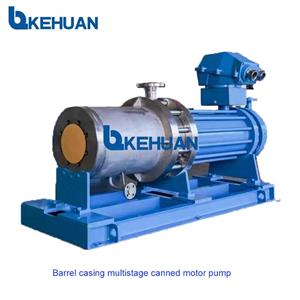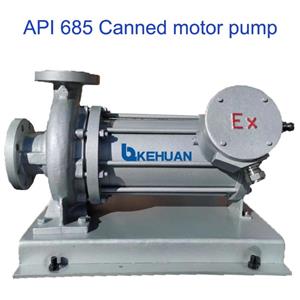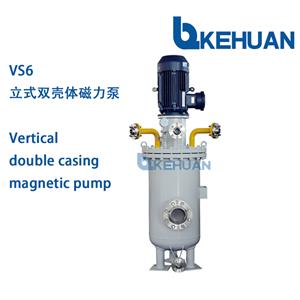Practical Guidelines for Centrifugal Pumps at Oil, Gas, Petroleum & Petrochemical Plants
The selection, configuration, packaging, installation, commissioning and operation of pumps needs far more care than what is usually exercised. Here are practical guidelines and useful recommendations for centrifugal pumps in different oil, gas, petroleum and petrochemical services.
Centrifugal Pumps
The most common pump type used across industries is the centrifugal pump. This is because of their flexibility, reliability, favored head-flow rate relations, reasonable prices and well-developed technologies. They are usually driven by electric motors, although steam turbine-driven centrifugal pumps have been used in certain applications. Horizontal pumps can be seen as more desirable, but in some applications, conditions and specific requirements might call for the selection of vertical pumps.
Policy
In many facilities, there has been a policy of “let’s see how it unravels” for all stages of projects from design, pump selection, pump location, pump piping to operation and maintenance. This policy is not suitable nor productive. Such a policy is not applicable for oil, gas, petroleum and petrochemical plants. All stages and steps—pump sizing, pump selection, pump order/purchase, inspection, installation, operation and maintenance—should be based on accurate technical evaluations, expert knowledge/experience and recent successful operating references.
Many pumps in key oil and gas services have been installed in a 1+1 (one operation and one standby) configuration, as the shutdown of a pump should not stop production. Shutting down the plant or facility due to a pump trip is simply not an option due to financial damages and other concerns. However, there should also be more attention to key areas related to increasing reliability and availability. Seals and bearings are a key focus in this regard.
Operating Temperatures
The operating temperature is a key parameter for pumps and their systems. Pumps for high temperature or low temperature services need great care. As an indication, for operating temperatures below 5 F (-15 C) and above 266 F (130 C), robust design and manufacturing guidelines should be used for pumps. This usually translates to the use of American Petroleum Institute (API) 610 pumps or an equivalent. There have been different features and provisions for high or low operating temperatures.
For instance, pump casings should be centerline supported to reduce the effects of temperature differences. Usually special materials and sealing systems, compatible with operating temperatures, should be employed. The top discharge, centerline supported pump configuration provides stability when subjected to extreme temperatures and associated (produced) piping loads on pump nozzles.
Speed
Pump speed should usually be chosen at an early stage of the sizing/selection process. Selection of the highest practical speed is often desirable because it yields the smallest size and, usually, the lowest cost and easiest containment of system pressure. The efficiency is usually improved with greater speed. However, higher speeds might reduce the lifetime of components, such as seals or bearings and overall reliability. Therefore, optimization is necessary to find the optimum speed for each pump. Code guidelines (such as API 610) and previously successful references should also be checked.
Mechanical Seals
Today, mechanical seals are specified for nearly any pump. Of course, there are sealless pumps, such as magnetic drive pumps, that do not need seals. Cartridge-type mechanical seals are most often preferred. Almost all seals utilize a small amount of the pumped liquid or an alternative liquid to flush the seal faces.
Mechanical seals need special attention for their selection, assembly, installation and commissioning. Seals should be checked for leakage particularly during the first hours of operation. A minor leak through the seal typically reduces to negligible after a short time, but if it continues there could be an issue. If there is something wrong with the seal installation, the seal could fail in the first hours (or first day) of operation. Otherwise, it might be concluded that the seal installation has been done properly.
The mechanical seal has been responsible for many unscheduled shutdowns of process/major pumps. The overall cost for seal replacement and seal maintenance through a pump’s life cycle is one of the most expensive costs associated with pump operation and maintenance. As a rough estimate, approximately $3,000 to $20,000 (on average) can be spent for pump mechanical seal replacement. Some pumps may require pump mechanical seal replacement every one to three years. Although in the case of a mistake in the seal selection or persistent operational issues, a seal failure could be experienced every few months. This is not acceptable, nor cost-effective, and the root cause of the problem should be found and eliminated.
Shop Tests
A shop performance test is an important test for nearly any pump. Pump curves for head versus flow rate, net positive suction head (NPSH), efficiency, power, etc. were theoretical predictions or were based on data of similar pumps. These curves should preferably be verified for each pump at the manufacturer’s shop before the pump is delivered to the jobsite. Ideally, a pump manufacturer should operate each pump in the shop for a sufficient period and measure all required parameters in different operating points to verify the performance and trouble-free operation.
There have been many procedures for pump performance tests. The number of points and the definitions are usually subject to negotiation between different parties, but the following are rough guidelines. Ideally, more than eight operating points should be considered and complete test data—including head, capacity, efficiency and power—for these points should be measured and recorded. These points are usually:
l shutoff
l minimum continuous stable flow
l midway between minimum and rated flows
l 80% of rated flow
l 90% of rated flow
l rated flow, typically around the best efficiency point (BEP)
l 115% of rated flow and a point at far-right side
This last point near the end of the curve could be 125% or 130% of rated flow or even more if the theoretical curve extends beyond.
Establishment of NPSH required (NPSHr) usually presents far greater difficulty for a pump manufacturer than other performance parameters. Consequently, more care should be taken when NPSH available (NPSHa) is too close to NPSHr (low NPSH margin).
For critical pumps, low NPSH margins, and others, an NPSHr testing should be specified. As another rough indication, NPSH margin that is less than 1.5 meters (or sometimes 2 meters) may lead to NPSHr testing.




